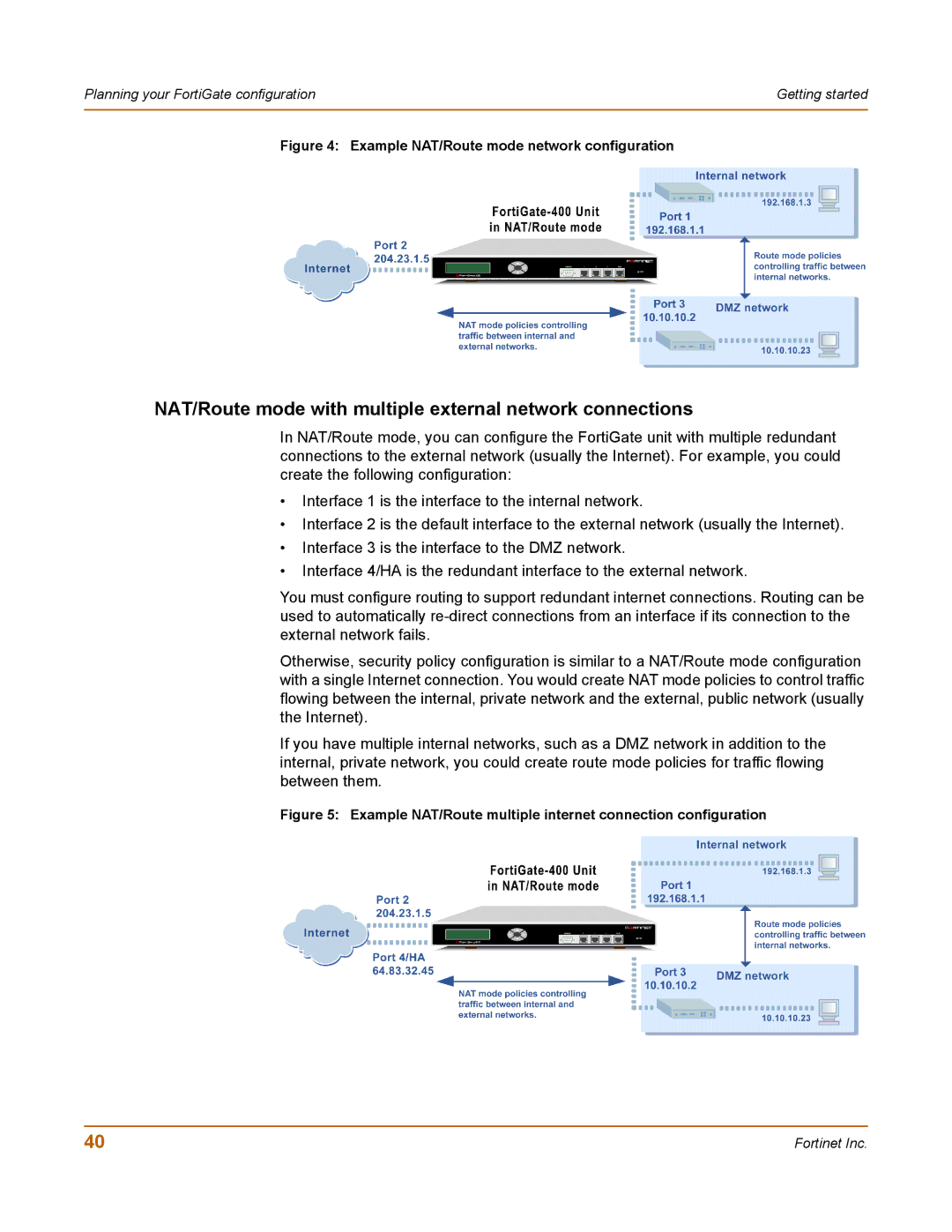
Planning your FortiGate configuration | Getting started |
|
|
Figure 4: Example NAT/Route mode network configuration
NAT/Route mode with multiple external network connections
In NAT/Route mode, you can configure the FortiGate unit with multiple redundant connections to the external network (usually the Internet). For example, you could create the following configuration:
•Interface 1 is the interface to the internal network.
•Interface 2 is the default interface to the external network (usually the Internet).
•Interface 3 is the interface to the DMZ network.
•Interface 4/HA is the redundant interface to the external network.
You must configure routing to support redundant internet connections. Routing can be used to automatically
Otherwise, security policy configuration is similar to a NAT/Route mode configuration with a single Internet connection. You would create NAT mode policies to control traffic flowing between the internal, private network and the external, public network (usually the Internet).
If you have multiple internal networks, such as a DMZ network in addition to the internal, private network, you could create route mode policies for traffic flowing between them.
Figure 5: Example NAT/Route multiple internet connection configuration
40 | Fortinet Inc. |
